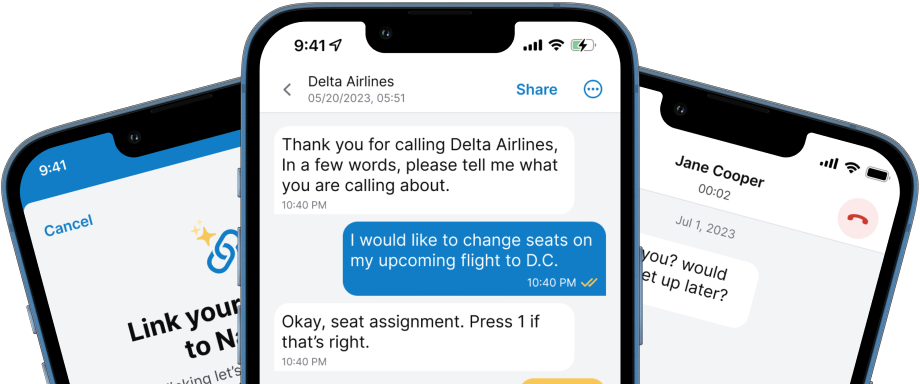A Guide to Flying With Hearing Aids
People with hearing loss need more planning and preparation before a flight. Click here to read all about it and prepare yourself for a flight!

Introduction
If you have hearing loss, you might be wondering how the flight experience can accommodate you if you wear hearing aids.
In this article, we aim to answer some of the most common questions surrounding flying with hearing aids and provide tips for making your flight as stress free as possible.
Do You Have to Take Out Hearing Aids at Airport Security?
There is good news – you do not have to remove your hearing aids during security checks. The same goes for cochlear implants. You get to keep them on.
This applies to all types of hearing aids - Behind the ear (BTE), Completely in canal (CIC), In the ear (ITE), and many others.
However, if you wear hearing aids, be prepared for potential extra screening by the security team. To avoid any problems, carry your TSA Notification Card to show security.
This screening is routine and involves no risk to you or your hearing aids or cochlear implant.
Can You Wear Hearing Aids on the Plane?
Yes, you can. They can be kept on during the entire flight. They don’t interfere with the plane's navigation or communication systems.
In fact, on your flight, your hearing aids can help you communicate better with the flight crew and other passengers.
Make sure to check the T-coil setting if your hearing aids have this feature. It can improve hearing in environments where there’s a lot of background noise, which is pretty much every single time you’re on a flight. Many airports have induction loop systems for hard-of-hearing travelers.
Problems People Have When Flying with Hearing Aids

Most problems that people experience when flying with hearing aids revolve around battery life and changes in air pressure.
For battery life, it's always a good idea to carry extra batteries. Flights can be delayed, journeys can get extended, and being stuck in a new place without functional hearing aids is not a pleasant experience.
Air pressure changes during takeoff and landing can result in a "popping" sensation or painful pressure in the ears, whether you use hearing aids or not.
But don’t worry, this is temporary and will ease as the pressure stabilizes. If you wear in-ear hearing aids and the pressure feels uncomfortable, you might try removing them during takeoff and landing.
Where to Put Hearing Aid Batteries During Your Flight
When flying with hearing aids, it's always a good idea to carry spare batteries. But where's the best place to keep them?
Because hearing aid batteries are small and can be easily misplaced, it's best to store them in a small, hard case. You might want to keep this case in your carry-on bag for easy access.
To make sure your hearing aid batteries last longer, keep them at room temperature and away from coins or keys, as any contact with metal can short-circuit them. Also, remember to keep the sticker on the new batteries until you're ready to use them.
How to Communicate Your Needs to Flight Staff
Effective communication with airline personnel is vital for a pleasant and safe flight experience when flying with hearing aids. Follow these suggestions to keep stress to a minimum:
- Inform the airline about your hearing loss while booking your flight, so they can accommodate you.
- Carry a “hearing impaired” card that you can hand to flight attendants. They can store it in your profile and locate your seat when necessary.
- Request pre-boarding at the gate, if needed, to give you enough time to settle and inform the flight crew about your specific needs.
Navigating In-Flight Entertainment With Hearing Aids
Airlines are working to make in-flight entertainment systems more accessible to people who are flying with hearing aids. Here are some things you can do to assure a smooth experience:
- If your hearing aids have a T-coil setting, a neck loop is helpful. It creates a magnetic field that your hearing aids can pick up, making audio more clear.
- Bring your own headphones or earbuds that are compatible with your hearing aids. Test them beforehand to ensure that they fit comfortably over your hearing aids and deliver good sound quality.
- Bring your own entertainment.
Managing Hearing Aids in Different Flight Conditions

Fluctuating flight conditions and cabin pressure can affect your hearing aids’ functioning. Consider the following tips:
- Keep your hearing aid manual handy. It'll help you make setting adjustments based on different flight conditions.
- Use the T-coil setting in your hearing aids if you're having trouble hearing onboard announcements or conversations.
Can You Use Bluetooth Connectivity on Hearing Aids Inside a Plane?
Passengers flying with hearing aids can use Bluetooth, but some rules need to be followed:
- Be aware of flight regulations and turn on "airplane mode" when required. Bluetooth functions are allowed after that.
- If you experience latency issues, consider using wireless headphones with Bluetooth-enabled hearing aids.
Understanding Emergencies: How Airlines Assist People with Hearing Loss
In an emergency, airline personnel should take into account travelers with hearing loss. Some of these measures include:
- Providing pre-flight safety briefings in accessible formats, like video screens with captions or written instructions.
- Using visual cues such as hand gestures to emphasize important information during an emergency.
Dealing with Hearing Aid Loss or Damage during Flight
Losing or damaging your hearing aids while flying can be distressing. To minimize these risks, you may want to take these steps:
- Use a hearing aid retention cord to keep your aids in place during your flight. This can prevent them from falling out or getting lost.
- Bring a backup pair of hearing aids, if you can. This way, you'll have a spare pair if anything happens during your flight.
Tips for Coping with Jet Lag and Sleep Differences for Hearing Aid Users

Jet lag can be especially challenging for people flying with hearing aids due to changing sleep patterns. Here are some ways to cope:
- Use a vibrating pillow alarm that works with or without your hearing aids.
- Try some relaxation techniques to help adjust to the new time zone, like yoga, deep breathing exercises, or meditation.
Travel Insurance for Your Hearing Aids: Do You Need It?
Taking out travel insurance that covers hearing aids can provide additional peace of mind. Here are some things to consider:
- Check if your current insurance policy includes travel coverage for medical devices like hearing aids. If not, inquire about adding it.
- Compare insurance plans to find one that specifically covers hearing aids and provides a level of coverage you feel comfortable with.
Navigating a Foreign Country with Hearing Loss
Exploring new countries can be challenging for those with hearing loss. Use these tips to make the most of your experience:
- Use phone apps that translate foreign languages and provide transcriptions of spoken language in real time.
- Use speech-to-text apps.
- Learn key phrases before arrival.
- Research deaf-friendly attractions, events, and facilities (especially hotels) to ensure a fun and accessible travel experience.
Handling Airport Announcements for Hard of Hearing Travelers
Airport announcements can be tricky for those with hearing loss. Try these strategies to stay updated:
- Sign up for text notifications or flight status updates through the airline's app.
- Make use of visual information screens throughout the airport that display flight statuses, gate changes, or delays.
Hearing Aid Care: Before and After a Flight
Proper care of your hearing aids before and after flying can extend their lifespan. Here are some tips for maintaining your hearing aids:
- Bring a hearing aid cleaning kit and follow a regular cleaning routine, as dust and debris can accumulate due to changing environments.
- Keep a small, airtight container with a desiccant handy. It'll help you properly store and protect your hearing aids from moisture and humidity.
Conclusion
Being proactive, equipping yourself with resources and information, and planning ahead can make your flight smooth and enjoyable. Whether you're an avid globetrotter or an occasional flyer, it's important to remember that flying with hearing aids shouldn't hamper your love for traveling.





